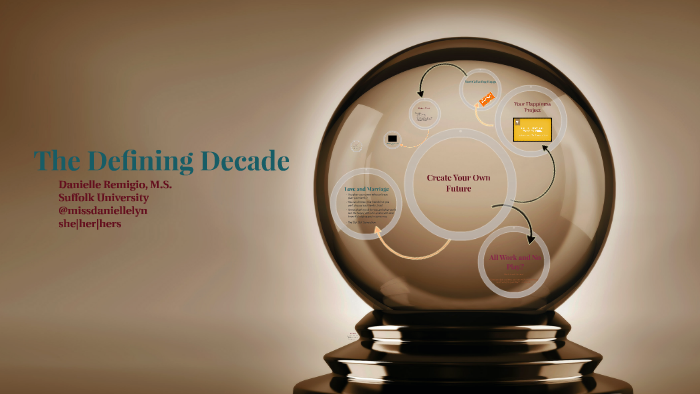Defining Decades: A Framework For Understanding Time
Defining Decades: A Framework for Understanding Time
Related Articles: Defining Decades: A Framework for Understanding Time
Introduction
With enthusiasm, let’s navigate through the intriguing topic related to Defining Decades: A Framework for Understanding Time. Let’s weave interesting information and offer fresh perspectives to the readers.
Table of Content
Defining Decades: A Framework for Understanding Time

Decades, ten-year periods that mark significant intervals in the flow of time, serve as fundamental units for organizing history, culture, and societal change. They provide a convenient framework for understanding broad trends, defining key events, and analyzing the evolution of ideas, technologies, and social structures.
The concept of decades emerges from the need to break down the vast expanse of time into manageable segments. While centuries offer a broader perspective, they can encompass significant shifts in human experience. Decades, on the other hand, offer a more granular lens, highlighting specific periods of innovation, upheaval, or stability.
Understanding the Terminology:
- Decade: A period of ten years, typically starting with a year ending in "0" and ending with a year ending in "9." For example, the 1980s encompass the years 1980 to 1989.
- Century: A period of one hundred years, starting with a year ending in "01" and ending with a year ending in "00." For example, the 20th century spans from 1901 to 2000.
- Millennium: A period of one thousand years, typically starting with a year ending in "001" and ending with a year ending in "000." For example, the 3rd millennium encompasses the years 2001 to 3000.
The Importance of Decades:
- Historical Context: Decades provide a framework for understanding historical events in their specific context. The Great Depression, for instance, is often associated with the 1930s, while the Cold War is linked to the 1950s and 1960s.
- Cultural Markers: Decades are often associated with distinct cultural trends, fashion styles, music genres, and social movements. The 1960s, for example, are known for their counterculture movement, while the 1980s are associated with the rise of MTV and the "yuppie" culture.
- Technological Advancements: Decades often mark periods of significant technological breakthroughs. The 19th century saw the rise of the steam engine and the telegraph, while the 20th century witnessed the development of the automobile, airplane, and computer.
- Social Change: Decades can be characterized by significant social changes, such as shifts in gender roles, racial equality movements, and changes in family structures. The 1970s saw the rise of feminism, while the 1990s witnessed a surge in LGBTQ+ activism.
Decades in the 21st Century:
The 21st century has already seen a significant impact of technological advancements, globalization, and climate change. The 2000s, for example, were marked by the rise of the internet and social media, while the 2010s saw the emergence of mobile technology and the rise of social activism.
FAQs on Decades:
Q: What is the difference between a decade and a century?
A: A decade is a period of ten years, while a century is a period of one hundred years.
Q: Do decades always start with a year ending in "0"?
A: While decades are typically defined as starting with a year ending in "0," there are exceptions. For example, the "Roaring Twenties" are often considered to start in 1920 and end in 1929.
Q: What are some examples of significant events that occurred in specific decades?
A: The 1960s saw the Civil Rights Movement and the Vietnam War, the 1980s witnessed the fall of the Berlin Wall and the rise of AIDS awareness, and the 2000s were marked by the 9/11 attacks and the rise of social media.
Q: Why are decades important for understanding history?
A: Decades provide a framework for analyzing historical events and understanding their impact on society. They allow us to identify patterns, trends, and turning points in human history.
Tips for Analyzing Decades:
- Focus on key events: Identify major events that shaped the decade and analyze their impact on society.
- Examine cultural trends: Explore fashion, music, art, and literature to understand the cultural landscape of the decade.
- Analyze technological advancements: Identify key technological breakthroughs and their impact on daily life.
- Consider social changes: Examine shifts in social norms, gender roles, and racial equality movements.
- Compare and contrast: Compare and contrast different decades to understand how they relate to one another.
Conclusion:
Decades offer a valuable framework for understanding the ebb and flow of time and the complexities of human history. By analyzing specific decades, we can gain a deeper understanding of the forces that have shaped our world, the trends that have defined our culture, and the events that have shaped our collective memory.








Closure
Thus, we hope this article has provided valuable insights into Defining Decades: A Framework for Understanding Time. We appreciate your attention to our article. See you in our next article!
You may also like
Recent Posts
- Shaping The Homes Of Tomorrow: Home Decor Trends For 2025
- Navigating The Evolving Landscape Of Home Decor Trends: A Comprehensive Guide
- Weaving History And Home: A Guide To Unique Vintage Farmhouse Decor
- The Enduring Appeal Of Wooden Duck Home Decor: A Timeless Symbol Of Nature And Serenity
- Beyond The Ordinary: A Guide To Unique Home Decor Accessories
- Navigating The Fast Fashion Landscape: Exploring Alternatives To SHEIN
- A Global Network Of Home Improvement: The Reach Of The Home Depot
- Finding The Perfect Pieces: A Guide To Home Decor Shopping
Leave a Reply